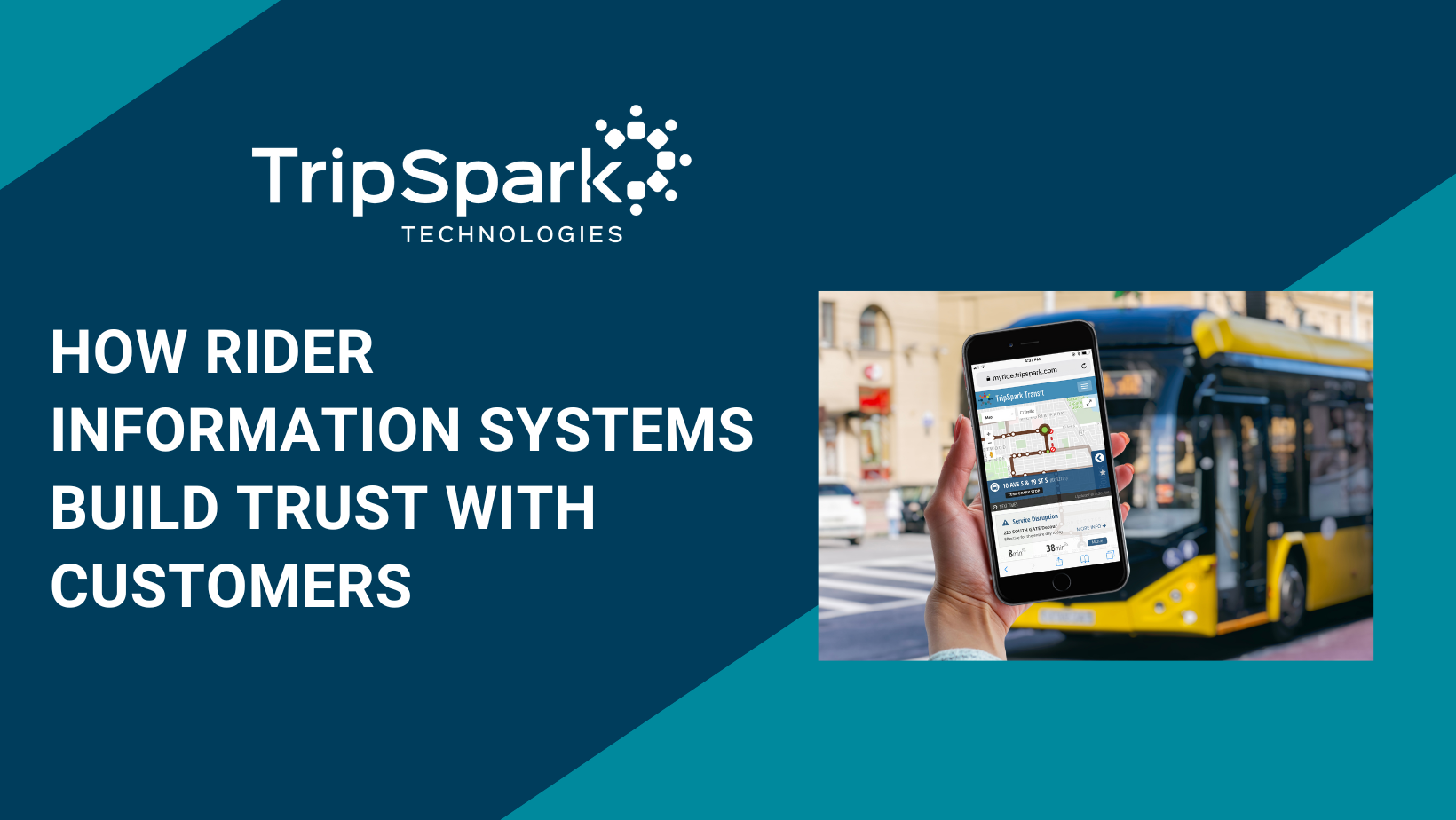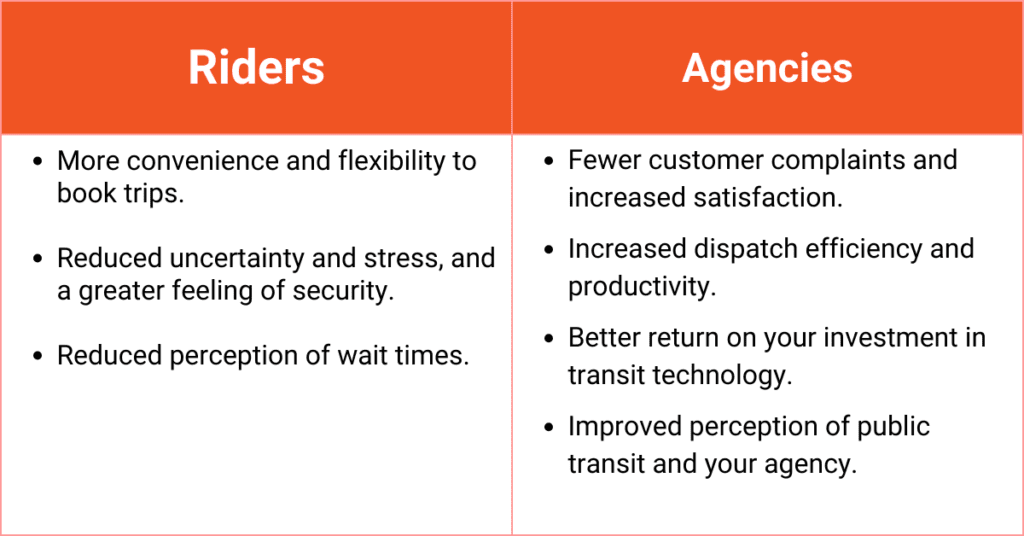How Rider Information Systems Build Trust With Customers

Where’s my bus? Is the bus running late? Am I waiting at the right stop? Will I make it to my destination on time?
No transit agency wants their customers to be worried about when their bus will arrive. However, taking public transit is stressful for some people because control over getting to their destination is dependent on a vehicle they can’t see. The more your customers wait and wonder about when the bus will arrive, the more they question taking public transit over driving a car.
Rider information systems are a powerful communication tool for easing a customer’s anxiety about taking public transit. This technology allows your agency to share real-time information (RTI) about bus locations, schedule updates, news and notifications via a web portal or SMS text, but specifically with a mobile app for riders on-the-go. Customers want accurate and reliable RTI because it gives them greater control over planning trips. They not only want information about trips they want to take, but the factors that could impact the trip, such as construction or rush hour traffic volume.
When agencies can alleviate the stress of taking public transit, they build trust with their customers. Let’s learn more the about benefits of using rider information systems.
Why Customers Don’t Trust Public Transit
While most citizens support public transit, many people don’t use it because of experiences with delays, overcrowding, and the time it takes to get to a destination compared to driving. While people can forgive factors out of your control, such as weather or construction, unreliable transportation is a turn off.
However, a global study by Hitachi Rail reveals that 75% of survey respondents would choose a better-connected public transport system over driving. From the same surveyed group, 73% said they would most likely travel on public transit if they could see live information about bus capacity.
Customers expect your agency to deliver trips that are safe, efficient, and flexible. Most importantly, they want digital interactions that are responsive to their needs and keep them updated with real-time information about trips.
To meet the demand for RTI, a mobile app that provides as much information before the trip about schedules, fares, departure and arrival times, and GPS tracking of vehicles can help your customers feel more confident about taking public transit. Route-specific RTI provides a greater feeling of control over trip planning, shortens perceived wait times, and can attract more riders to your agency’s services.
What Is a Rider Information System?
Rider information systems are a digital communication tool for sharing information with customers about using your agency’s services with several easy-to-access methods, including:
- Web-based portal
- Smartphone or tablet app
- SMS text messages
- Interactive Voice Response (IVR) system
- Phone-in customer service
When fully integrated with back-office software and synchronized with vehicle CAD/AVL data, the rider information system updates automatically, giving customers access to reliable and accurate RTI no matter how, when, or where they prefer to access trip information. Everything they need to plan and book a trip is readily available 24/7.
Back-office integration also means that the rider information system will experience less downtime when updates or maintenance is required.
What Are the Benefits of Rider Information Systems?
RTI is considered a vital component in increasing public transit ridership. According to the Future of Public Transportation report by KPMG, 27% of transit agencies surveyed believe access to real-time data about service performance, location, and occupancy has the “greatest potential to change the transport landscape.”

A mobile app with RTI for busy riders-on-the-go helps customers see how easy and convenient it is to take public transit. Numerous studies have shown that mobile RTI can increase customer satisfaction and grow ridership. Mobile RTI not only provides information about taking a trip, but external factors that could impact the customer’s experience, such as road closures due to construction or rush hour traffic volume.
Share Real-Time Information With TripSpark’s myRide
A rider information system is an essential digital communication tool that enables transit agencies to share real-time information about trips. Customers value RTI because it helps ease their concerns about taking public transit. RTI makes them feel safer, more informed, and in greater control of trip planning. Making RTI available on mobile and desktop apps, as well as offering phone or SMS options, is critical for agencies who want to build trust with riders.
myRide is TripSpark’s rider information system for giving customers the most up-to-date transit information on a mobile app or a web-based portal. myRide is a fully integrated, comprehensive solution for communicating accurate and reliable RTI that makes trip planning simple and convenient.
And good news! myRide is now available to our Routematch Fixed customers (with some limitations). Since it’s easy to add TripSpark’s rider information system to RM-Fixed, you can start using myRide right away.
Ready to never hear “where’s my bus” again? The TripSpark team can help! Contact us and let’s talk about building trust with your riders using real-time transit information.

